 If you know me, or have read this blog at all over the past year, you know that I've been working with sourdough since December 2009, baking at least two loaves of bread nearly every weekend. Maybe you've even been the recipient of one of my experiments. One of the most mysterious things about this process is that I haven't been able to find one good recipe for a rustic sourdough loaf that has the classic hard crunchy outer crust, and the spongy, fragrant inner bread. I've also had a hell of time getting my white breads to rise beyond bloated flatbread shapes. I finally stumbled upon a good recipe that produced a nice loaf with a strong rise. I served this bread at a chili party/meeting I hosted for my softball team and it got rave reviews.
If you know me, or have read this blog at all over the past year, you know that I've been working with sourdough since December 2009, baking at least two loaves of bread nearly every weekend. Maybe you've even been the recipient of one of my experiments. One of the most mysterious things about this process is that I haven't been able to find one good recipe for a rustic sourdough loaf that has the classic hard crunchy outer crust, and the spongy, fragrant inner bread. I've also had a hell of time getting my white breads to rise beyond bloated flatbread shapes. I finally stumbled upon a good recipe that produced a nice loaf with a strong rise. I served this bread at a chili party/meeting I hosted for my softball team and it got rave reviews.Sourdough Olive Bread
2 cups lukewarm water (110°F)
2 cups white sourdough starter, room temperature
2 teaspoons active dry instant yeast
1/2 teaspoon diastatic malt**
7 to 8 cups bread flour***
1 tablespoon salt
2 tablespoons finely-minced fresh rosemary
2 tablespoons olive oil
2 cups Kalamata olives, pitted and coarsely chopped
Semolina flour, for dusting
** Diastatic malt is powdered malted grain, usually barley, but wheat, and rice may also be malted It breaks down the starch in dough to yield sugars on which the yeast can feed.
*** The thickness of your sourdough starter can determine how much flour needs to be used. If you think the dough is too moist, add additional flour (a tablespoon at a time). The same is true if the dough is looking dry and gnarly. Add warm water (a tablespoon at a time). Your dough should not be sticky but should form a nice elastic ball. I usually have to add extra flour.
Combine water, sourdough starter, yeast, and diastatic malt in the bowl of a mixer; stir with a rubber spatula or wooden spoon, just to moisten. Add flour, salt, rosemary, and olive oil; mix the dough until it snaps back quickly. Turn the dough onto a lightly floured board; add olives and knead by hand for several turns to be sure the olives are well incorporated and the dough is smooth, adding additional flour if needed. NOTE: Knead dough by pulling the dough towards you and then pushing down and forward with the palms of your hands (kneading gives the bread the elasticity and lets it rise).
Place the dough in a lightly oiled large bowl. Cover the bowl with plastic wrap Let rise until it doubles in volume (when you can put your finger in the dough and it leaves and indentation and doesn't spring back out) approximately 4 to 8 hours (depending on the temperature and the starter used, the rising time can vary as much as 2 hours).
Punch dough down and knead it on a floured board to feed it one more time before baking. Divide dough in half and shape each dough ball into a loaf or round shape (boule); place each loaf into a pan (I used both a loaf pan and a round spring-form cake pan). Cover with plastic wrap and place in a warm spot to rise until doubled in size, approximately 1 to 3 hours.
Oven Bread Rising: Sometimes I use my oven for the rising. Turn the oven on for a minute or so, then turn it off again. This will warm the oven and make it a great environment for rising bread. If you can't comfortably press your hand against the inside of the oven door, the oven is too hot. Let it stand open to cool a bit. Sourdough rises more slowly than yeast bread; Always remember, the longer the rise time, the more sourdough flavor.
Cool or Refrigerator Bread Rise: If I don't have the time to wait for the rise to finish or I know that I will be interrupted before the completed rise, I do a cool rise. A cool rise is when the dough is place in the refrigerator and left to rise slowly over night approximately 8 to 12 hours. I usually do this after the first rise and the dough has been shaped into a loaf. As this is a longer rise time, it improves the sourdough flavor in your finished bread.
Preheat oven to 450 degrees F. After the bread has risen, slash the bread with a bread razor or a very sharp knife making three 1/2-inch deep diagonal slashes. Brush or spray the top of the bread with cold water. Slide the trays in the oven. Spray the oven with a spray bottle full of water and close the oven door. Thirty seconds later, open the oven door and mist the oven again. Repeat this two more times, then turn the oven temperature down to 400 degrees F. and let the bread bake for 15 minutes.
After 15 minutes, turn the bread around 180 degrees so it can brown evenly; bake another 10 minutes or until nicely browned. NOTE: A good check is to use an digital thermometer to test your bread. The temperature should be between 200 and 210 degrees F.
Remove from oven and place bread on a wire rack to cool. Let the loaves cool for 30 minutes before cutting (this is because the bread is still cooking while it is cooling).
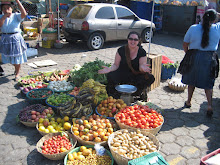



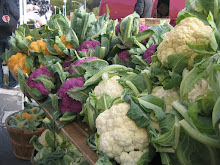



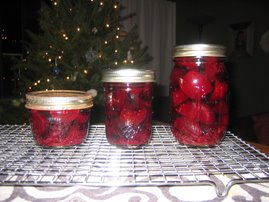






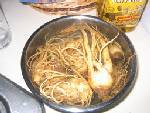
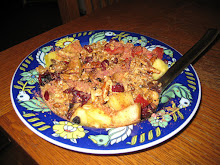
No comments:
Post a Comment